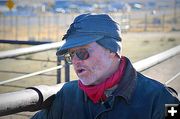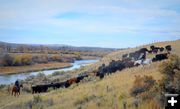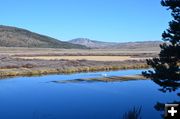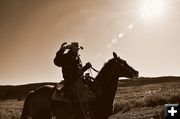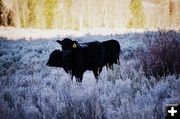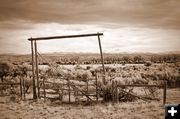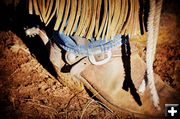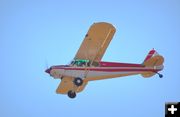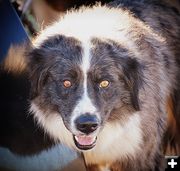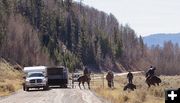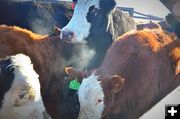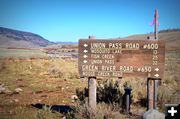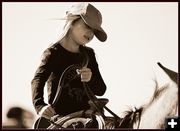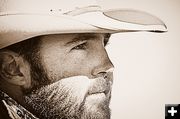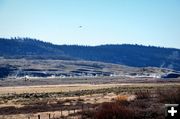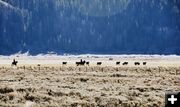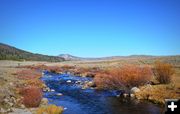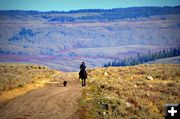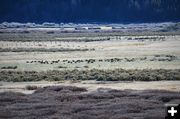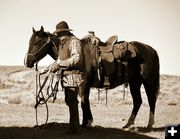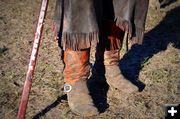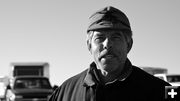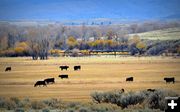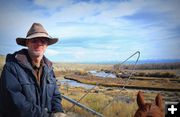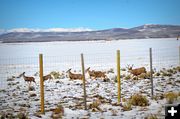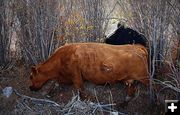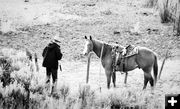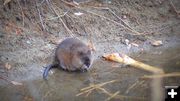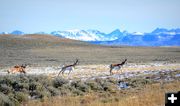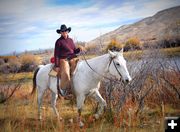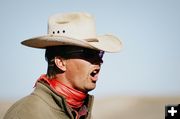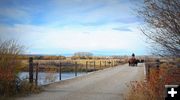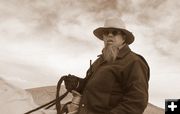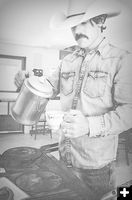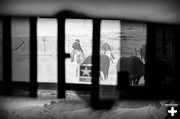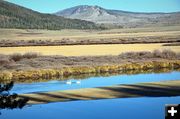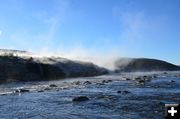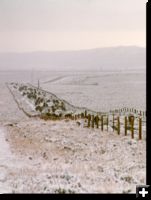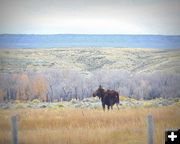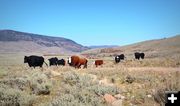
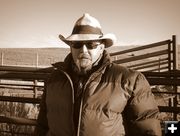
Coke Landers
Patiently poses for a shot at the cutting grounds.
|
|
Scenes Along the Green River Drift
by Terry Allen
October 24, 2016
"Hey, if you trust me with your camera, I'll try to get a photo of a bear bite on the side of that cow."
No self-respecting photographer would turn down an opportunity like that, so I handed Eddie Wardell my Nikon and he rode off into the herd.
For well over a hundred years a community of cowboys (and when I say cowboys, I mean cowgirls and cow kids, too) like Eddie Wardell from the historic cattle ranches of the Upper Green River Valley have joined together to move their beef cattle north along the Green River to graze the lush meadows and forests. There the cattle fatten up for a fee on public lands. Those lands are also home to grizzly bear and wolf who have a taste for beef.
Ranchers drive the herds north and stay with them during the spring and summer protecting the livestock from the bears and wolves the best they can. The camp riders I spoke with prefer heavy caliber side arms to bear spray. The riders doctor bulls, steers, cows and calves if they survive predator attacks or become ill or injured in the rough terrain.
In the fall after a few good cold spells, most of the cattle get the message that winter is around the corner and start to drift south back toward their home ranches where they know there will be good food and care for the winter.
The cattle that donít come south are searched out by horseback and airplane and encouraged to start moving south. If there are just a few strays, they may be loaded into a trailer and trucked back to the home ranches. Fred Holden has a Piper Cub aircraft and scouts the forests, remote ravines and thick willows for strays. Flying with him is Todd Sterns who radios locations to cowboys on the ground so they can drive them south.
Bulls tend not to move south for some reason and also like to hide in very thick willow forests that cowboys find very difficult to navigate. I watched Fred dive into willows many times and then soar up again trying to drive the bulls out. Sometimes it works, sometimes it doesnít.
I called Eddie Wardell a few days after he took some pictures of that bear bit cow. "We donít have all our bulls," he said. "Weíre really close on our cows, within 1%. But on our calves weíre not anywhere near. I havenít received the death lists from the camp riders yet, but I expect similar loses as last year, not good. As the price of cows goes down, it hurts that much more."
I wanted to talk to the pilot of the Piper Cub and I thought Albert Sommers might have his number but he didnít, so instead I asked him a few questions about the summer drift numbers. "Most of our cows are down," he said. "Our association has so far 60 confirmed deaths by grizzly and wolves. These are numbers confirmed by Game and Fish. We think we have all our bulls, except one that died up there. We lost 11% of our calves. We used to lose 2% before we had the bears and wolves. Most of those losses will be compensated by Game and Fish based on market value of a calf. Unfortunately, we raise them to sell as yearlings and are not compensated for that loss. Because of this it is hard to keep our cattle numbers up."
I met Milford Lockwood at the Cora cutting grounds and so far under his brand heíd seen 13 dry cows. A dry cow is a cow without a calf. When a mother cow and a calf go north together on the drift but only a cow comes home, that is a dry cow, so Milford figured at that point heíd lost 13 calves to bears, wolves or accident or illness.
Iíve watched a lot of westerns in my life and so when I think about the west and ranching I think of rustlers. "Well, with the value of cows the way they are thatís always a possibility," said Milford. "I seem to recall I heard of some rustling going on over in Sweetwater County recently."
Most all the ranchers I spoke with expect to go back up one last time to look for more strays in the meadows and forests. The drift is about 70 miles from one end of the drift all the way up to the forest grazing. The cattle follow dirt roads, game, cattle trails in search of grazing and water, so it wonít be an easy chore, especially now that we have rain, snow and cold winds to contend with.
Ranching cowboys are easy to recognize of course. They are on horses, they wear cowboy hats (some with fold down ear protectors), and their coat collars are turned up. Iíve never heard one complain.
If you plan a sightseeing trip up into the Upper Green, take a thermos of hot coffee or a flask of something stiffer. It might be appreciated and youíll likely be rewarded with a memorable encounter with a real cowboy.
A huge thanks to everyone who talked to me about what is going on with the drift and let me take their picture.
Thank you Jonita Sommers for letting me use a photo and details gleaned from your website (www.greenriverdrift.org.
A big thanks to Dawn at Pinedale Online for sponsoring this story.
You, dear readers, are all allowed to copy low rez photos from this story for social media sharing. If you'd like hi-rez prints, I sell them for family friendly prices. I can make them pretty much any color, or size. It's how I help buy new cameras...since once in awhile a steer kicks a lens, I drop one into a river or I do a summersault off the back of a stone boat.
Terry Allen: txpartisan@gmail.com
btw, selected photographs from this story will be going up on the walls of Boondocks in Pinedale in a week or so, so stop by and see images under glass along the lines of 13 x 19 inch size.
Oh yeah, my exhibit at the Pinedale Library will be up for another week or so.
If you want a fuller history of the drift: http://www.greenriverdrift.org/drift.htm
You can also learn more here: https://www.realranchers.com/
Ben Marshal is a local western musician that visited the Sommers Homestead (along the Green River Drift) recently: http://www.benmarshal.com/
|

